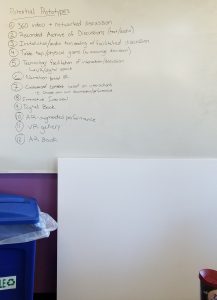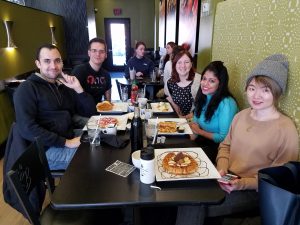Home Front: Week Two
The Work This Week:
Week two was spent getting our ideas in order.
We began our week by developing design pillars that we feel work with Theater of War’s mission and implementation. Our hope is that these pillars will help use focus our design better, and make sure we remain true to our original vision. The four pillars we settled on are Safe Discussion, Community, Honest Emotions, and Accessibility.
To further inform our preliminary design, we spoke with Drew Davidson, the director of the ETC and its main point of contact with Theater of War prior to the launch of this project. Drew was able to share information with us about what Mr. Doerries is looking for regarding deliverables, content and technology involved, as well as past multimedia projects that Theater of War has considered. Armed with this information, we brainstormed a list of possible deliverables.
After running this list of ideas past our mentors, we started to narrow down our choices. We did this by first seeing which ideas matched all four of our design pillars. Once we had a good idea of which projects would stay true to our vision, we went back through the remaining list and assessed what was possible given the scope of our 13 remaining weeks in the project period. By the end, we had narrowed our list down to four ideas we could flesh out and take to Mr. Doerries, in order to see which direction he prefers to go with the project.
This week also involved continuing our efforts to better understand the culture surrounding American veterans and the wars in Iraq and Afghanistan. In our project room, we held a viewing of The Hurt Locker. Additionally, we were able to see Pittsburgh Opera’s production of The Long Walk, an autobiographical modern American opera about an Explosive Ordnance Disposal veteran adjusting to life back home. We finished the week by viewing Ralph Vituccio’s InService, a documentary about the experiences of Pittsburgh veterans in the Iraq war.

